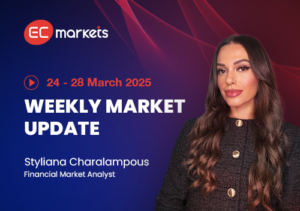Gold smashing past $3,000 an ounce isn’t just a price tag—it’s a sign. Joseph Cavatoni from the World Gold Council says global investors are turning to gold amid growing geopolitical and economic uncertainty. For forex traders’ clients, this is a trend to watch.
Gold Shines as a Risk Shield
In an interview, Cavatoni said, “Gold’s reclaiming its spot as a risk-mitigating asset. With trade tensions, unclear inflation, and a hunt for safe havens, it’s back in demand.” Gold’s jumped 15% this year, from $2,500 to $3,000 in just 210 days—a sharp climb showing people are using it to dodge rising risks.
Western Investors Pile Into ETFs
World Gold Council data shows global gold ETFs raked in $3 billion last week (31 tonnes), marking eight straight weeks of inflows. North America led the charge, with year-to-date inflows hitting $19 billion (207 tonnes)—on track for the best Q1 since 2022. “Risk is everywhere, and investors are saying it’s time for protection,” Cavatoni noted. “The U.S. took $12 billion of that.” He expects Europe to step up if the economy or dollar weakens further.
Tariffs Boost Gold’s Appeal
The U.S. tariff plan unveiled on April 2 could lift gold higher. While gold isn’t targeted, Cavatoni highlighted its inclusion in Trump’s critical minerals order. “Gold’s a monetary metal, vital in portfolios. The government sees its strategic value,” he said. Tied to national security, this move underscores gold’s growing financial and geopolitical role.
Physical Gold Flows to the U.S.
The U.S. remains a gold magnet. Swiss data shows February exports hit 214 tonnes, with the U.S. on top. Year-to-date totals are 449 tonnes—the most since 2012. Cavatoni said traders are shipping gold to back futures amid tariff uncertainty. “Until tariffs are clear, gold keeps coming to the U.S.,” he added.
Central Banks and Investors Drive the Surge
Cavatoni stressed that central banks and investors—not jewelry buyers—are fueling gold’s rise. High prices have slowed Asian and Middle Eastern demand, with more people recycling gold. “Investment’s taking off,” he said. “China’s insurers can now buy gold via the Shanghai Exchange—a big shift.” Central banks like China and Poland keep stacking reserves, some using gold to prop up their economies.
What’s Next for Gold?
The World Gold Council doesn’t predict prices, but Cavatoni noted analysts eyeing $3,100 or even $3,450. “We don’t see much pushing gold down. The case is solid,” he said. For forex traders, gold’s moves could sway the dollar and spark volatility—keep watching.




